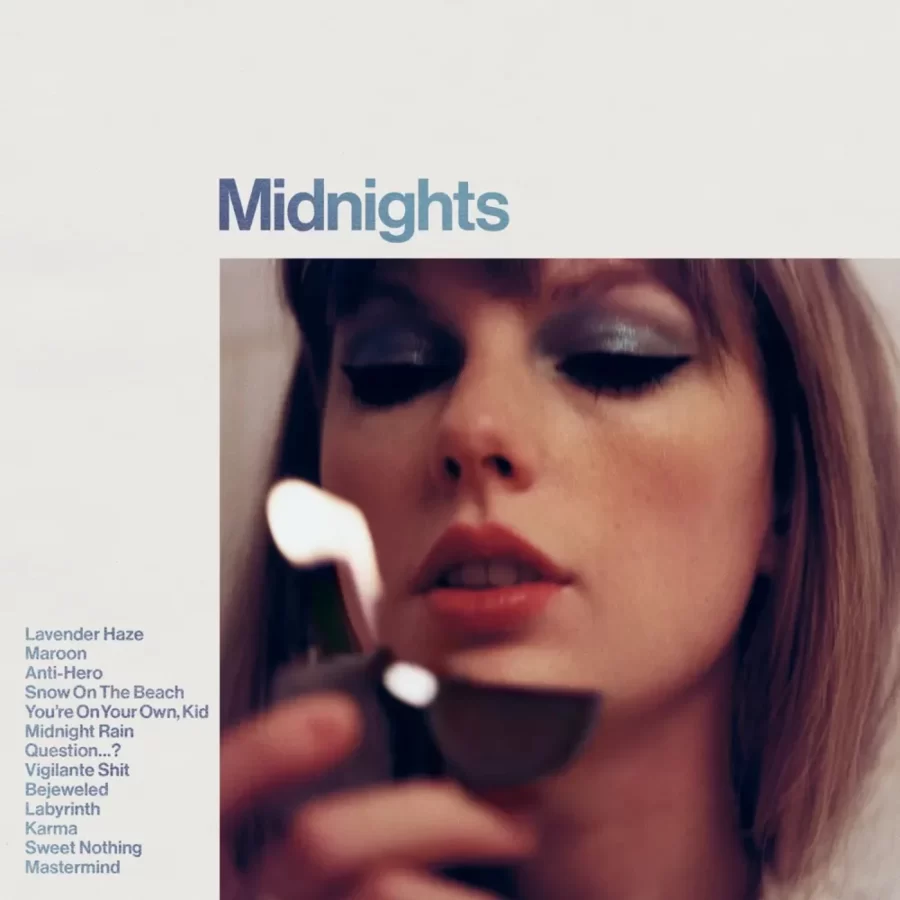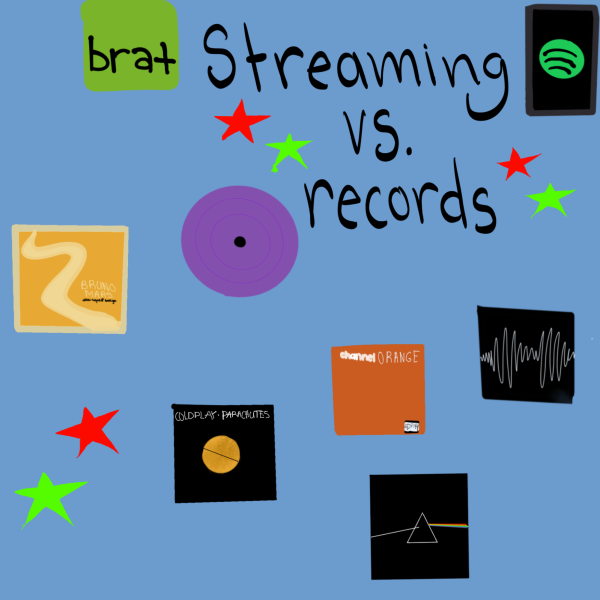Taylor Swift Dominates the Music Industry
As of 2022, music icon Taylor Swift’s net worth is approximately $400 million and is surely increasing with the release of her new album “Midnights” that dropped on Oct. 21. While the paycheck may be motivation to work for most, Swift’s passion to tell stories is what drives her to create artful pieces of music that never fail to leave her audience in awe. The release of her tenth new album is a monumental moment for “Swifties” (a nickname for Swift’s fan base) as it has been nearly two years since releasing her last new album titled “Evermore.” On Aug. 28, Swift announced that “Midnights” would have 13 tracks that reflect upon 13 different midnights throughout her life, hence the album’s title. Unironically, “Midnights” was released at 12 a.m., and in a true Taylor Swift fashion, the musician surprised her audience just three hours after the initial album was released with seven additional songs on the album, titled the “Midnights (3AM Edition).” All 20 songs included in the new release are evidently crafted with care as the songs each tell a distinct story filled with creative concepts that leave listeners breathless with every verse she sings.
One of the most anticipated songs on the album was “Anti-Hero,” a track that Swift claims to be one of her favorite songs she has ever written because of the insecurities she brings into light. Throughout the song, Swift explores the burden that depression, guilt and shame can have on people. As always, the singer delves into these heavy topics in an artful, sensitive manner— a style that Swift is often credited for doing exceptionally well in her music. In addition to currently being her most-streamed song on Spotify, Swift’s “Anti-Hero” was the first single on the album with a music video that was released on Oct. 21 at 8 a.m. The video is filtered with soft shades of orange and blue, and from a visual perspective, these complementary colors mirror Swift’s contrasting aesthetic and emotions, which are seen throughout the album.
Swift is notorious for her gut-wrenching songs that strike a nerve for every person who has ever been wronged in a relationship, and it is evident that this concept continues in “Midnights.” As Swift’s writing and voice has matured since the release of her first album in 2006, it is clear that the way she approaches these types of songs is changing as well. For example, her song “Maroon” deals with the emotional turmoil of a failed relationship,—speculated to have been with actor Jake Gyllenhaal—acting like a sequel to her 2012 album “Red.” Nonetheless, Swift’s “Maroon” amplifies the song with intriguing, poetic comparisons that Swift makes between the color and her experiences. Swift’s music is threaded with different narratives, and “Midnights” is no exception as she deals with the emotional endeavors of growing up in “You’re On Your Own, Kid,” as well as internal battles she explores in “Labyrinth” and “Bigger Than The Whole Sky” from the original album and the 3AM Edition, respectively.
“Midnights” was a success from the moment it dropped because of Swift’s breathtaking motifs enveloped in all of her work since her debut album. For instance, Swift includes several literary references in her work, her most famous alluding to Shakespeare’s “Romeo and Juliet” in her song and music video “Love Story” from her second album “Fearless.” After her 2008 song gained extensive popularity, Swift began embedding references to literature in her other albums. In her 2017 album titled “Reputation,” Swift makes reference to classic novel “A Tale of Two Cities” in her song “Getaway Car.” The opening line of the song, “It was the best of times, the worst of crimes,” mirrors the first sentence in Charles Dickinson’s novel, “It was the best of times, it was the worst of times,” showing Swift’s thoughtfulness when it comes to songwriting as she makes these mature references that most artists are unable to do. Likewise, Swift makes references to “The Great Gatsby” in her song “This is Why We Can’t Have Nice Things,” also from the “Reputation” album.
As previously mentioned, Swift is not only a songwriter, but an author. Through her music, Swift creates fictional worlds that listeners often feel they are a part of. Her most famous narrative is easily a trio of songs from her eighth album “Folklore,” written about a love triangle between fictional characters named Betty, James and Augustine. Each song is written from the perspective of one of these characters, giving listeners not only a song to listen to, but an experience to connect with.
Furthermore, Swift entices her audience with colors that she highlights throughout her different musical eras. In her fourth album “Red,” Swift references the color red throughout her music, such as the “red scarf” in her infamous song “All Too Well.” Swift also makes reference to the color of her “Red” album cover with her iconic red lipstick that she still wears to this day. Additionally, written during the COVID-19 pandemic, Swift’s albums “Folklore” and “Evermore” allude to the color gold quite often, giving the albums a mystical undertone to them.
Swift’s craft is unlike any modern artist in music. Her clever motifs and allusions to other work as well as her thoughtfulness to secretly drop hints throughout her content is unique to her style. Beyond her creativity, though, her words are often considered by fans as the quintessence of the music industry, and Swift will continue inspiring her listeners with each song she writes.

Kristyn Dentremont, Class of 2023, is co-Editor-in-Chief of The Searchlight. At Walpole High School, Kristyn is a captain of the girls' cross country...













